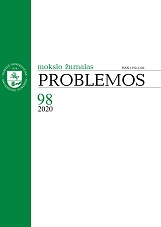Gaia Theory: Between Autopoiesis and Sympoiesis
Gaia Theory: Between Autopoiesis and Sympoiesis
Author(s): Audronė ŽukauskaitėSubject(s): Philosophy of Science, Post-War period (1950 - 1989)
Published by: Vilniaus Universiteto Leidykla
Keywords: Gaia; systems theory; Lovelock; Margulis; autopoiesis; sympoiesis;
Summary/Abstract: The article discusses the development of the Gaia Hypothesis as it was defined by James Lovelock in the 1970s and later elaborated in his collaboration with biologist Lynn Margulis. Margulis’s research in symbiogenesis and her interest in Maturana and Varela’s theory of autopoiesis helped to reshape the Gaia theory from a first-order systems theory to second-order systems theory. In contrast to the first-order systems theory, which is concerned with the processes of homeostasis, second-order systems incorporate emergence, complexity and contingency. In this respect Latour’s and Stengers’s takes on Gaia, even defining it as an “outlaw” or an anti-system, can be interpreted as specific kind of systems thinking. The article also discusses Haraway’s interpretation of Gaia in terms of sympoiesis and argues that it presents a major reconceptualization of systems theory.
Journal: Problemos
- Issue Year: 2020
- Issue No: 98
- Page Range: 141-153
- Page Count: 13
- Language: English

